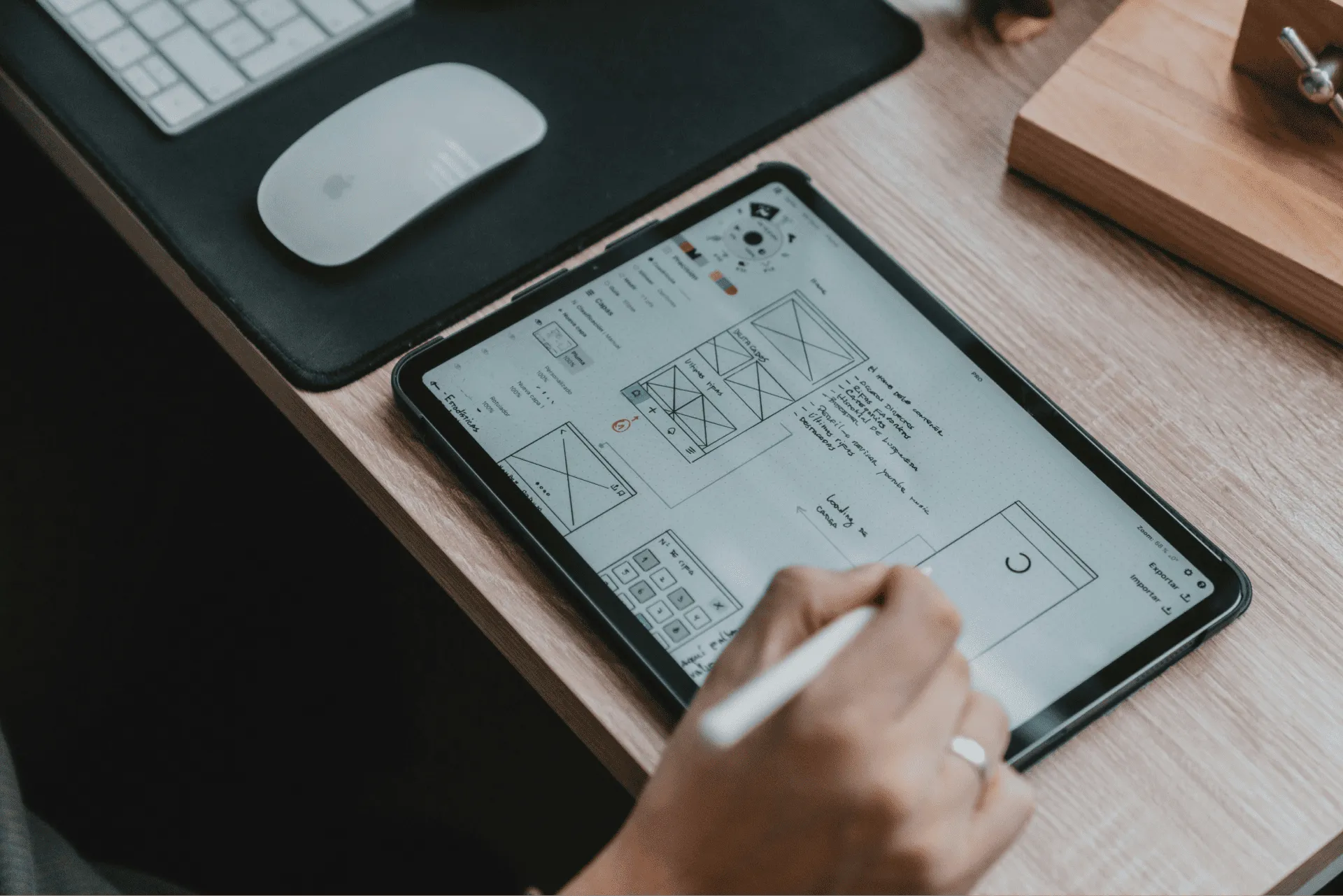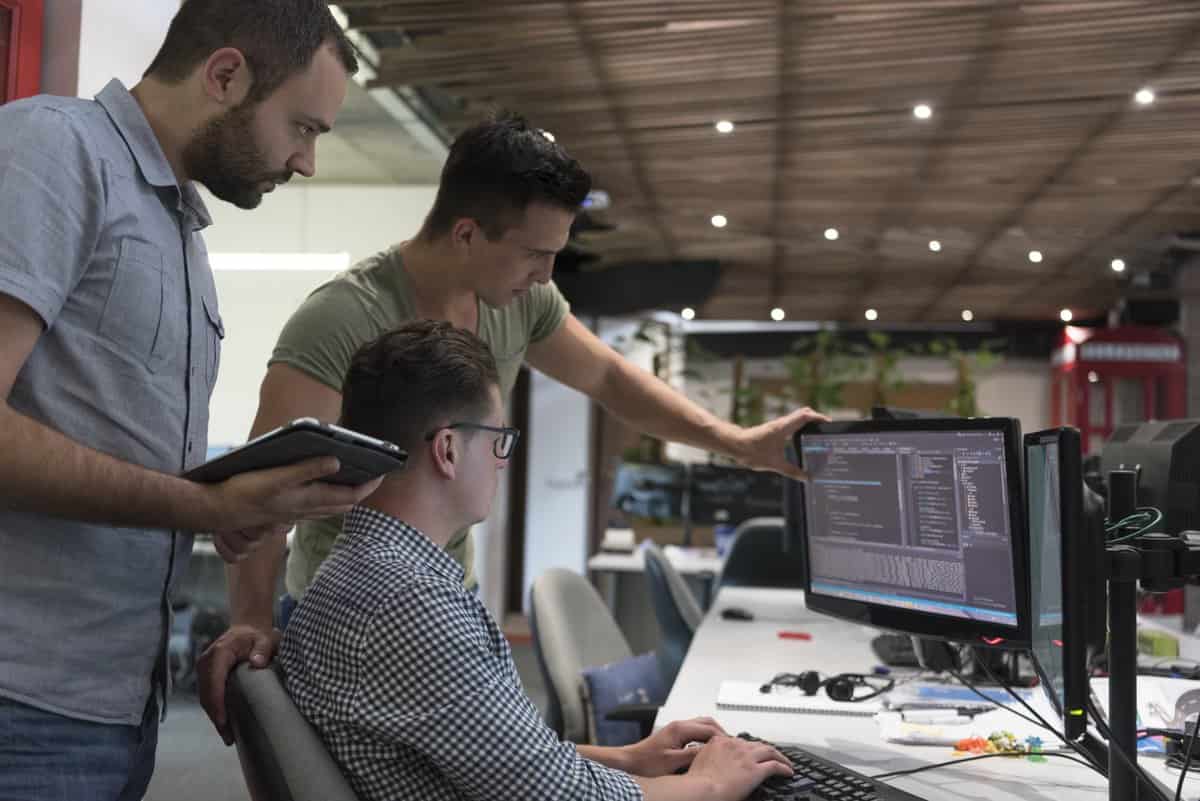Product design plays a pivotal role in software development. It’s not just about creating a visually appealing interface; you must craft experiences that resonate with users and meet their needs efficiently. We’ve written this post for those looking to form a robust software product design team or to understand the intricacies of the design process in software development.
Understanding Software Product Design
Software product design is a multi-faceted discipline that forms a core part of the development lifecycle. It transcends aesthetics, delving into user experience (UX) and functionality. At its heart, software product design is about solving problems and creating intuitive, user-friendly interfaces that enhance user interaction with the software.
Critical Components of Software Product Design
User Research and Persona Development
Understanding your end-users is crucial in product design. Effective user research methods like surveys, interviews, and usability testing help create detailed user personas. These personas guide designers in making informed decisions that align with user expectations and needs.
However, as software design evolves, consumer and user behaviors will continue to become increasingly complex, and marketers and designers are adapting their strategies to stay ahead. Here are some trends in persona development intended to increase the agility and depth of understanding of design strategies that are effective and resonate deeply with consumers:
- Data-Driven Personas: Traditional personas, often based on assumptions or limited data sets, are replaced by ones rooted in comprehensive data analytics. Design team are leveraging big data, AI, and machine learning to gather and analyze vast amounts of information, including browsing habits, purchase history, and social media interactions.
- Dynamic Personas: Personas can evolve. These dynamic personas adapt to new information by continuously collecting and analyzing data, ensuring user design strategies remain relevant and practical. These dynamic personas adjust to by continuously collecting and analyzing data, ensuring that applied design principles remain appropriate and effective.
- Micro-segmentation: This specificity in segmenting users involves creating niche personas targeting distinct audience groups. This research is more granular and allows for increased user personalization.
- Integration of Psychographics: Designers and marketers can step beyond demographics and apply more information about users’ lifestyles, values, attitudes, and belief systems to understand use cases better and inform more personalized design structures.
Wireframing and Prototyping
Wireframes and prototypes are instrumental in visualizing and testing ideas before full development begins. They serve as a blueprint for the final product. Tools like Sketch and Adobe XD facilitate the creation of these visual guides, allowing for early detection and rectification of potential issues.
User Interface (UI) Design
UI design focuses on the visual elements users interact with. It’s about creating an interface that is aesthetically pleasing but also intuitive and responsive. The goal is to enhance user interaction through well-thought-out design choices.
User Experience (UX) Design
A positive UX is key to customer satisfaction. It involves designing a seamless journey for the user, from the first interaction to the final goal. Strategies in UX design include:
- Creating a logical flow.
- Reducing cognitive load.
- Ensuring that the software is accessible to all users.
Software Development Processes in Product Design
Agile Methodology
The agile approach to software product design emphasizes flexibility, responsiveness to change, and adherence to contemporary design principles. It advocates iterative development, where design and development are continuous and evolutionary, allowing for rapid adaptability to user needs and market changes.
DevOps Integration
DevOps plays a crucial role in bridging the gap between development and operations. It enhances collaboration and streamlines the software delivery process, ensuring a practical translation of design into a functional product. Working with DevOps in product design promotes a culture of continuous communication and cooperation, bridging the gap between designers and developers. This collaborative environment ensures that design decisions are aligned with technical capabilities and constraints, leading to a more cohesive and feasible design.
The continuous feedback loops in DevOps enable designers to receive immediate and ongoing feedback from internal team members and external users. This feedback is invaluable for making informed design decisions and ensuring the product meets user expectations.
Assembling Your Software Product Design Team
Roles and Responsibilities
A comprehensive product design team includes product managers, UX/UI designers, and developers. Each member plays a specific part; their collaborative effort is essential for the product’s success.
Skill Sets and Team Composition
Diverse skill sets are vital for a well-rounded product design team. Each skill, from creative design thinking to technical expertise, contributes to the team’s ability to deliver a product that meets business objectives and user needs.
The team requires a blend of creative, technical, and managerial skills. Each role contributes unique expertise and perspective to developing a technically sound, user-centric software product that is market-ready. A well-integrated team has the following functions working to provide usable software product design:
Product Manager
The product manager is the strategic leader of the team. They are responsible for setting the product vision, defining the roadmap, and aligning the team’s efforts with business goals. Their role involves market research, customer understanding, and prioritization of features. They bridge the customer’s needs and the team’s execution, ensuring the product delivers value.
User Experience (UX) Designer
UX Designers focus on the overall feel of the product. They are responsible for creating a seamless and intuitive user experience, which involves conducting user research, designing user flows, and creating wireframes and prototypes. Their expertise ensures the product is aesthetically pleasing, functional, and easy to navigate.
User Interface (UI) Designer
UI designers are concerned with a product’s visual aspects. They design interface elements like buttons, icons, and layouts, ensuring the product is visually appealing and aligns with brand standards. They also work closely with UX designers to ensure the aesthetics enhance the product’s usability.
Interaction Designer
Interaction designers specialize in crafting the product’s interactive elements. They focus on how users interact with the software, including gesture, touch, and click interactions. Their role is crucial in making the product engaging and intuitive.
Information Architect
The Information Architect organizes content and data in a way that is logical and easy to navigate. They structure the information hierarchy, making it accessible and understandable. This role is essential for products with significant content or complex data sets.
Front-end Developer
Front-end developers implement the design into code. They are responsible for building the product’s user interface using programming languages like HTML, CSS, and JavaScript. Their role is crucial in bringing the designs to life and ensuring they work across different devices and browsers.
Back-end Developer
Back-end developers work on server-side development. They manage the database, server logic, and application integration. Their work is critical for the product’s functionality, especially for handling large-scale data processing and security.
Quality Assurance (QA) Specialist
QA specialists are responsible for testing the product for bugs and issues. They ensure that the product is reliable and functional and meets quality standards. Their role involves automated and manual testing, essential to the product’s success post-launch.
Graphic Designer
Graphic designers create visual content for the product, including images, illustrations, and branding materials. They enhance the visual appeal and contribute to the product’s brand identity.
Content Strategist
Content Strategists develop and manage the textual content. They ensure the content’s language, tone, and style align with the product’s goals and user expectations. Their work is essential for clear communication within the product.
FAQ Section
What is the difference between product design and product development?
Product design and development are interconnected yet distinct. While product design focuses on the user interface and experience, product development involves the actual coding and building of the software.
Do I need a dedicated product design team for my software project?
Having a dedicated team can enhance the focus on user-centric design. However, integrating design within the development team is also viable, depending on the project’s size and scope.
How does user feedback influence the design process?
User feedback is integral to the iterative nature of design. It provides insights for refining and improving the product, ensuring it truly resonates with the end-users.
What tools are commonly used in software product design?
Popular tools include Sketch for wireframing, Adobe XD for prototyping, and Figma for UI and UX design. These tools facilitate various aspects of the design process.
How can I integrate product design into an existing software development process?
Incorporating design into an ongoing development cycle involves aligning design stages with development sprints and ensuring constant communication between designers and developers.
Conclusion
Software product design is a dynamic and essential component of software development. By understanding its various facets and effectively integrating them into development processes, teams can create software products or SaaS solutions that look great and provide exceptional user experiences.
Today’s users demand more from their software than ever before. Delivering on those expectations starts with a standout user experience. For over 30 years, the talent at Unosquare has helped companies in highly regulated industries create and modernize their applications and create beautiful, elegant UX.
Our approach is backed by established methodologies and experienced teams. Contact us if you are grappling with a complex digital solution and need help, and keep an eye on our blog for more helpful information about Digital Product Design and Development.



